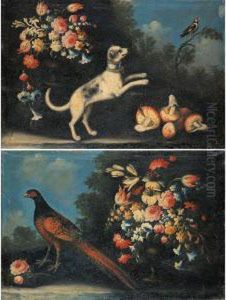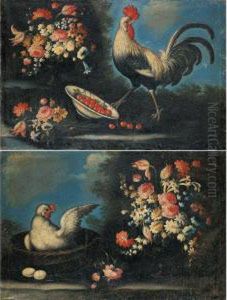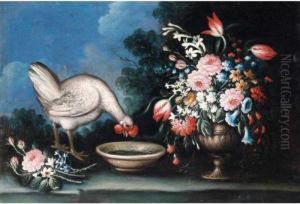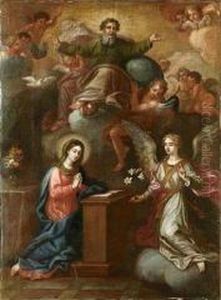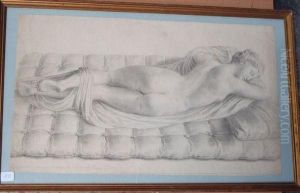Giuseppe Pesci Paintings
Giuseppe Pesci was an Italian Baroque painter known primarily for his religious and portrait works. Born in Florence in 1621, Pesci's artistic journey began in the culturally vibrant atmosphere of the city, which was a hub for artists during the Renaissance and Baroque periods. However, details about his early life, including his family background and initial training, are relatively obscure, as records from that time are scarce and often incomplete.
Pesci's style was influenced by the dramatic chiaroscuro and emotional intensity typical of the Baroque period. He was profoundly affected by the works of Caravaggio and his followers, which is evident in Pesci's use of strong contrasts between light and dark, a technique known as tenebrism. This dramatic use of lighting helped to heighten the emotional impact of his works and bring a sense of realism to his subjects.
Pesci's career unfolded during a time when the Catholic Church was a major patron of the arts, and this is reflected in the religious nature of much of his work. His paintings often depicted scenes from the Bible, the lives of the saints, and the Virgin Mary, which were intended to inspire piety and devotion among the faithful. These works would have been found in churches, private chapels, and the homes of wealthy patrons.
Despite his talents, Giuseppe Pesci's career was tragically cut short; he died at the young age of 30 in 1651. His premature death meant that his output was limited, and as a result, he did not gain the same level of fame as some of his contemporaries. Nevertheless, his existing works continue to be studied and admired for their contribution to the Baroque style and their embodiment of the period's artistic ideals.
Today, Pesci's works are considered important for understanding the evolution of Italian Baroque painting. His legacy, though not as extensive as that of other artists from the era, is preserved in a number of churches and collections where his ability to convey the spiritual and emotional essence of his subjects still resonates with viewers.
